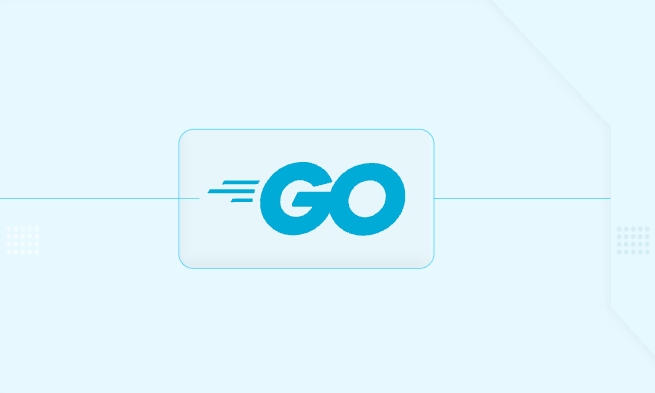The key to handling errors in Go language is to always check errors, properly wrap the context and handle them uniformly. Go uses return value to handle errors. The common way is to use error as the last return value, such as data, err := os.ReadFile("file.txt"); err must be checked and cannot be ignored; it is recommended to use fmt.Errorf or errors.Wrap to add context to troubleshoot problems; Go 1.13 supports %w wrapping errors, and can use errors.Is and errors.As to judge; avoid repeated printing of error logs; errors can be handled uniformly at key nodes instead of panic; custom error types can be improved readability by defining structures such as type MyError struct { Code int Msg string }; Finally, if err != nil is the style of Go error handling, and details should be paid attention to to ensure code robustness.

It is actually quite straightforward to deal with errors in Golang. The key is to understand its error handling mechanism and develop good habits. Go does not have an exception mechanism like other languages ??(such as try/catch), but instead treats errors as values. Although it seems a bit long-winded, its logic is clearer and has stronger control.

Errors are not optional, always check
In Go, a function error usually returns a value of type error , most commonly as the last return value. for example:

data, err := os.ReadFile("file.txt")
if err != nil {
// Handle error} Many newbies may ignore checking err , or write a _ error, which is a very dangerous approach in actual development. The correct way is to make a judgment every time you get an error, even if you just record the log.
suggestion:

- Never ignore error
- Don't use
_to skip the error variable - If you do know that an operation will not go wrong, you can add comments to explain the reason
Packaging and passing error messages should be clear
Sometimes we not only want to "discover" errors, but also want to keep the context to facilitate troubleshooting. At this time, you can use fmt.Errorf to add context, or use errors.Wrap in the standard library (if you use pkg/errors ).
for example:
_, err := os.Open("file.txt")
if err != nil {
return fmt.Errorf("opening file failed: %v", err)
} If you are using Go 1.13, the standard library already supports .Unwrap() method, you can make more detailed error judgments through errors.Is and errors.As .
hint:
- Use
%wto wrap the error for subsequent extraction - Do not print errors repeatedly to avoid log confusion
- Unified error handling at critical nodes, instead of panic every function
Customize error types to improve readability
Sometimes we need to distinguish between different types of errors, such as database connection failure and insufficient permissions. You can define the error type yourself:
type MyError struct {
Code int
Msg string
}
func (e MyError) Error() string {
return e.Msg
} Then, when processing, you can use errors.As to determine the specific type:
var myErr *MyError
if errors.As(err, &myErr) {
fmt.Println("Error code:", myErr.Code)
}This can make the code easier to maintain and also facilitate the provision of a unified error response format.
Summarize how to use error
- Don't be afraid to write if err != nil , this is Go's style. If you get used to it, you will feel clear
- Errors need context , otherwise it will be painful to debug
- Appropriately encapsulate error types for unified processing
- Don't use panic/recover indiscriminately unless it is a truly unrecoverable error
Basically all is it, not complicated but it is easy to ignore details.
The above is the detailed content of How to handle errors in golang. For more information, please follow other related articles on the PHP Chinese website!

Hot AI Tools

Undress AI Tool
Undress images for free

Undresser.AI Undress
AI-powered app for creating realistic nude photos

AI Clothes Remover
Online AI tool for removing clothes from photos.

Clothoff.io
AI clothes remover

Video Face Swap
Swap faces in any video effortlessly with our completely free AI face swap tool!

Hot Article

Hot Tools

Notepad++7.3.1
Easy-to-use and free code editor

SublimeText3 Chinese version
Chinese version, very easy to use

Zend Studio 13.0.1
Powerful PHP integrated development environment

Dreamweaver CS6
Visual web development tools

SublimeText3 Mac version
God-level code editing software (SublimeText3)
 Is golang frontend or backend
Jul 08, 2025 am 01:44 AM
Is golang frontend or backend
Jul 08, 2025 am 01:44 AM
Golang is mainly used for back-end development, but it can also play an indirect role in the front-end field. Its design goals focus on high-performance, concurrent processing and system-level programming, and are suitable for building back-end applications such as API servers, microservices, distributed systems, database operations and CLI tools. Although Golang is not the mainstream language for web front-end, it can be compiled into JavaScript through GopherJS, run on WebAssembly through TinyGo, or generate HTML pages with a template engine to participate in front-end development. However, modern front-end development still needs to rely on JavaScript/TypeScript and its ecosystem. Therefore, Golang is more suitable for the technology stack selection with high-performance backend as the core.
 How to install Go
Jul 09, 2025 am 02:37 AM
How to install Go
Jul 09, 2025 am 02:37 AM
The key to installing Go is to select the correct version, configure environment variables, and verify the installation. 1. Go to the official website to download the installation package of the corresponding system. Windows uses .msi files, macOS uses .pkg files, Linux uses .tar.gz files and unzip them to /usr/local directory; 2. Configure environment variables, edit ~/.bashrc or ~/.zshrc in Linux/macOS to add PATH and GOPATH, and Windows set PATH to Go in the system properties; 3. Use the government command to verify the installation, and run the test program hello.go to confirm that the compilation and execution are normal. PATH settings and loops throughout the process
 How to build a GraphQL API in golang
Jul 08, 2025 am 01:03 AM
How to build a GraphQL API in golang
Jul 08, 2025 am 01:03 AM
To build a GraphQLAPI in Go, it is recommended to use the gqlgen library to improve development efficiency. 1. First select the appropriate library, such as gqlgen, which supports automatic code generation based on schema; 2. Then define GraphQLschema, describe the API structure and query portal, such as defining Post types and query methods; 3. Then initialize the project and generate basic code to implement business logic in resolver; 4. Finally, connect GraphQLhandler to HTTPserver and test the API through the built-in Playground. Notes include field naming specifications, error handling, performance optimization and security settings to ensure project maintenance
 Go sync.WaitGroup example
Jul 09, 2025 am 01:48 AM
Go sync.WaitGroup example
Jul 09, 2025 am 01:48 AM
sync.WaitGroup is used to wait for a group of goroutines to complete the task. Its core is to work together through three methods: Add, Done, and Wait. 1.Add(n) Set the number of goroutines to wait; 2.Done() is called at the end of each goroutine, and the count is reduced by one; 3.Wait() blocks the main coroutine until all tasks are completed. When using it, please note: Add should be called outside the goroutine, avoid duplicate Wait, and be sure to ensure that Don is called. It is recommended to use it with defer. It is common in concurrent crawling of web pages, batch data processing and other scenarios, and can effectively control the concurrency process.
 Go embed package tutorial
Jul 09, 2025 am 02:46 AM
Go embed package tutorial
Jul 09, 2025 am 02:46 AM
Using Go's embed package can easily embed static resources into binary, suitable for web services to package HTML, CSS, pictures and other files. 1. Declare the embedded resource to add //go:embed comment before the variable, such as embedding a single file hello.txt; 2. It can be embedded in the entire directory such as static/*, and realize multi-file packaging through embed.FS; 3. It is recommended to switch the disk loading mode through buildtag or environment variables to improve efficiency; 4. Pay attention to path accuracy, file size limitations and read-only characteristics of embedded resources. Rational use of embed can simplify deployment and optimize project structure.
 How to build a web server in Go
Jul 15, 2025 am 03:05 AM
How to build a web server in Go
Jul 15, 2025 am 03:05 AM
It is not difficult to build a web server written in Go. The core lies in using the net/http package to implement basic services. 1. Use net/http to start the simplest server: register processing functions and listen to ports through a few lines of code; 2. Routing management: Use ServeMux to organize multiple interface paths for easy structured management; 3. Common practices: group routing by functional modules, and use third-party libraries to support complex matching; 4. Static file service: provide HTML, CSS and JS files through http.FileServer; 5. Performance and security: enable HTTPS, limit the size of the request body, and set timeout to improve security and performance. After mastering these key points, it will be easier to expand functionality.
 Go for Audio/Video Processing
Jul 20, 2025 am 04:14 AM
Go for Audio/Video Processing
Jul 20, 2025 am 04:14 AM
The core of audio and video processing lies in understanding the basic process and optimization methods. 1. The basic process includes acquisition, encoding, transmission, decoding and playback, and each link has technical difficulties; 2. Common problems such as audio and video aberration, lag delay, sound noise, blurred picture, etc. can be solved through synchronous adjustment, coding optimization, noise reduction module, parameter adjustment, etc.; 3. It is recommended to use FFmpeg, OpenCV, WebRTC, GStreamer and other tools to achieve functions; 4. In terms of performance management, we should pay attention to hardware acceleration, reasonable setting of resolution frame rates, control concurrency and memory leakage problems. Mastering these key points will help improve development efficiency and user experience.
 Go select with default case
Jul 14, 2025 am 02:54 AM
Go select with default case
Jul 14, 2025 am 02:54 AM
The purpose of select plus default is to allow select to perform default behavior when no other branches are ready to avoid program blocking. 1. When receiving data from the channel without blocking, if the channel is empty, it will directly enter the default branch; 2. In combination with time. After or ticker, try to send data regularly. If the channel is full, it will not block and skip; 3. Prevent deadlocks, avoid program stuck when uncertain whether the channel is closed; when using it, please note that the default branch will be executed immediately and cannot be abused, and default and case are mutually exclusive and will not be executed at the same time.






